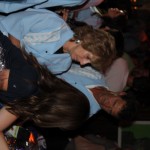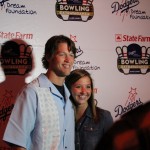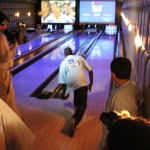
You’ve heard the news by now, surely, the cat having been let out of its proverbial bag. As reported by ESPN on Wednesday, the Toronto Blue Jays are sign stealers; the Toronto Blue Jays are cheaters.
I found the report deeply disturbing. Don’t get me wrong, I’m not troubled by the undeniable facts that prove the Blue Jays are cheating. Not at all. What’s most troublesome about the revelations, to me, a proud Blue Jays supporter, is that Toronto, the sign stealers, can’t even get cheating right. They’re obviously not very good at it, as evidenced by their 30-29 record at the Rogers Centre this season. In 2010, Toronto’s .569 home winning percentage was good for third in the AL East. In 2009, that number was .543, good for — you guessed it — fourth in the division. It’s always third or fourth place, man, and I’m sick of it. If the Jays are going to go to the trouble to cheat, I mean really cheat, allegedly going as far as to put someone — a spy — in the stands to steal signs, I’d much rather they be successful. Cheat, but cheat well, my beloved Blue Jays! I can only hope that general manager Alex Anthopoulos, in his retooling of the franchise, is pouring resources into the Cheating Department as well as the Scouting Department.
But this isn’t about me, and my fandom. It’s about the Blue Jays stealing signs, and where we go from here. The analysis, reactions and rebuttals to the ESPN piece are out there, have been written in spades. And what’s important, here and now, at this moment in time, is that the NotGraphs Investigative Reporting Investigation Team has scored, as you were probably expecting, an exclusive interview with Toronto’s Rogers Centre’s mysterious Man In White. Actually, our bold investigative reporter was honest: He stumbled upon the Man In White by chance, running into him outside the ballpark after Thursday’s matinee between Oakland and Toronto, the Man In White smoking a cigarette outside Rogers Centre’s gate eight. Dressed in immaculately white Adidas runners, black pants, and a tight, white, Anderson Cooper-esque v-neck t-shirt, when asked whether he was actually the now-infamous Man In White, the man responded, “I am he,” blew five cigarette smoke rings, “And he is I.”
The Man In White agreed to sit down with our one man NotGraphs Investigative Reporting Investigation Team at St. Louis Bar and Grill — if we were buying, and we were — across the street from the Rogers Centre. Below is a transcript of the exclusive, bombshell interview:
Read the rest of this entry »













